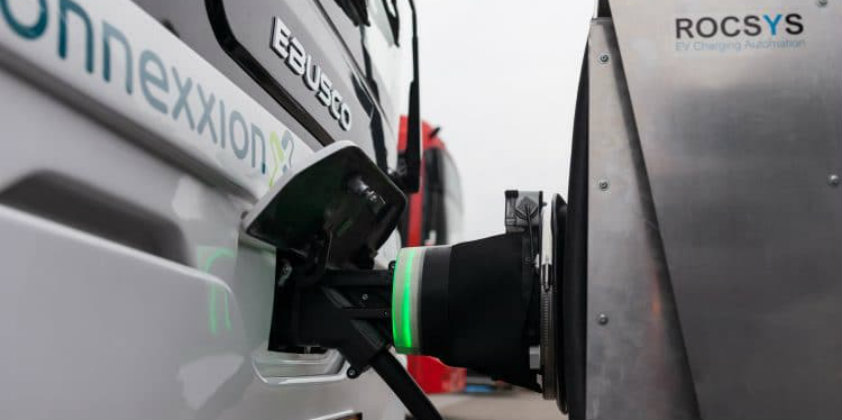Ebusco and Rocsys working together to automate bus depots

Ebusco is a supplier of electric buses and depot chargers, while Rocsys supplies plug-in robots. Together they are working to automate bus depots through robotisation. The innovative robot ensures that the CCS plug of the depot charger is plugged into the bus automatically and 100% correctly.
“The advantages of automating bus depots are many and varied: automating this process means there is no need for human hands and that has two major benefits. First of all, it saves time (and time is money), but perhaps even more importantly, it eliminates the risk of a bus not being charged in the morning, because someone forgot to plug in the bus or the plug wasn’t inserted properly,” said Peter Bijvelds, CEO of Ebusco.
Automation adds to the choices that have to be made when using the bus fleet in a concession. Often it is necessary to decide at an early stage how and where to charge electric buses. Ebusco has a very clear view on this: plug-in charging is the best solution. No expensive and time-consuming infrastructure is needed for plug-in charging; all you have to do is install chargers in the depot.
Ebusco buses are equipped with (cobalt-free) LFP battery technology that makes it possible to drive more than 350 km on a single battery charge. “The only argument we regularly hear in favour of charging via a pantograph is that nobody has to do anything manually. That argument is no longer relevant thanks to this innovative robot,” said Bijvelds. “This combination saves enormously on costs, time and permits compared to pantograph solutions.”
“A lot of people think that robots are something we’ll have in the future, but we’re proving that they can do the job now. The prototype robot is ready and working. Delivery of the first series of robots will take place in April 2021, after which a demo set-up will be installed at Ebusco in Deurne. A second, larger series is scheduled for July 2021,” said Crijn Bouman, CEO of Rocsys.
There are plenty more automation developments in the pipeline. The robot is being further developed so that it can serve several buses at the same time. The companies are also working hard to further standardise communication between the vehicle, the charger, the robot and the higher-level systems. This means they can get the entire charging process ready for self-driving electric vehicles.



































